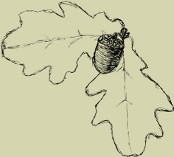42 41 40 39 38 37 36 35 34 33 32 31 30 29 28 27 26 25 24 23 22 21 20 19 18 17 16 15 14 13 12 11 10 9 8 7 6 5 4 3 2 1
Issue 38 (2007)
The subject of the research was the shrinkage of waterlogged archaeological pinewood that underwent pre-treatment in 10-30% water solutions of PEG 300, PEG 4000, sucrose and the mixtures of polyglycols and then, it was freeze-dried. Changes in dimensions of wood samples were determined immediately after freeze-drying, and after seasoning of freeze-dried testing material at relative humidity 44 and 70%. The slightest dimensional changes were noted in case of wood treated with PEG 300 at uptake reaching the values from 22 to 37% of oven-dry wood mass.
Key words: archaeological wood, shrinkage, impregnation, freeze-drying
Investigations were carried out on the contemporary wood of Scots pine (Pinus sylvestris L.) recovered following a two-year period of deposition in conditions of a wet archaeological site in Biskupin. The impact of the natural environment on the examined wood was assessed on the basis of: its infestation by microorganisms, mass loss, selected physical properties and chemical composition. The comparison of the investigated parameters revealed small differences of the examined characteristics of pinewood subjected to the two-year long experiment.
Key words: wood degradation, microorganisms, chemical composition
The limit fungicidal value against moulds (Aspergillus niger van Tieghem, Chaetomium globusom Kunze, Penicillium cyclopium Westling, Penicillium funiculosum Thom, Paeciliomyces varioti Bainer, Trichoderma viride Pers. ex. S.F. Gray aggr) and C. puteana were determined. The 11 preservatives containing the following fungicides: 2-Octyl-3-2H-Isothiazolone, 5-Chloro-2-Methyl-2H-Isothiazol-3-one, 5-Chloro-2-Methyl-4-Isothiazol-3-one, 2-Methyl-4-Isothiazol-3-one, 2-Octyl-3-2H-Isothiazolone, 2-N-Octyl-4-Isothiazolin-3-on, IPBC, Benzalkonium Chloride, Methylene-Dithiocianate, Tetrakis hydroxymethyl phosphonium sulphate, Carbendazim, 2-Methyl-Thio-4-Tertbutylamino-6-Cyklopropyloamino-S-triazin, 1,2-Benzisothiazolin-3-one, Didecyldimethylammonium chloride, 2-Methyl-3-2H-Isothiazolone. The most effective fungicides were IPBC and the mixture of Methylene-Dithiocianate and Benzalkonium Chloride.
Key words: mould, fungicides
The paper presents an overview, based on the authors’ long studies and the literature, of the biodegradation of porous building materials such as concrete, brick, mortar and plaster by wood dry rot fungi in buildings. The biodegradation mechanism and the effect of dry-rot fungi on the technical properties of building materials are discussed.
Key words: biodegradation, wood dry-rot fungi, inorganic building materials
The microfibril angle (MFA) has been examined in the tangent walls of tracheids in the larch wood from a plantation culture, along the width of individual annual rings. MFA measurements have been made by a computer image analyser in tangent preparations cut out of the samples earlier subjected to thermal treatment at 85°C in a 20% solution of Cu(NO3)2 for 24 hours.
Key words: larch wood, plantation culture, annual ring, microfibril angle
The sorption properties of unsteamed and steamed European beech wood were analyzed in order to determine the practical influence of the treatment on properties of the wood-water system. The Hailwood-Horrobin model was used to describe and explain changes in the equilibrium moisture content. The reduction of the dissolved water content was found after the treatment. The accessibility of water vapor to the sorption sites as well as the hydrated water content practically did not change. The kiln-drying intensity changes were also related to steaming. The recommendations for modifications of kiln-drying schedules considered the modified hygroscopic properties as well as the increase in the drying rate of steamed wood. The drying gradient values should be reduced during the initial stage of drying, i.e. for moisture content values above the Fiber Saturation Point, in order to obtain the demanded drying intensity and quality.
Key words: equilibrium moisture content, drying gradient, kiln-drying schedule
This paper presents results of investigations concerning the heat of combustion and thermal analysis of laboratory test sheets without any filling agents and with 5% filling agent (rye or wheat). For comparative purposes, the above-mentioned analyses were also carried out for rye and wheat bran and starch.
Key words: paper test sheets, paper stock, cereal bran (rye and wheat), heat of combustion, thermal analysis
Thermal utilization investigations were carried out in the heating boiler of 25 kW heat power. The boiler was a part of a heat station and was working together with the water heat storage of 900 l capacity. During the experiments boiler water temperature frequently reached its maximum permitted value of 80°C and at this moment the fan supplying air to combustion stopped and started again when temperature went down below 75-76°C. Considerable variations of the boiler heat power and other parameters were observed. The boiler was preheated before investigations. Thermal utilization in the boiler took place in two steps: pyrolisis and wooden gas combustion in the nozzle. The following parameters were measured: temperature in the pyrolisis chamber, flame temperature in the nozzle, volume stream rate and temperature of boiler water, boiler heat power, concentrations of: oxygen, carbon monoxide, nitric oxide, nitrogen oxides and dust, and also air excess rate in flue gases. Heat efficiency and pollutant emission indicators were calculated. The pollutant concentration values, measured during the investigations, were below permitted values established in the Polish Regulations. The lowest value of carbon monoxide concentration was 362 mg/nm3 (normalized to 6% oxygen concentration, dry gas): and was observed at the temperature 385°C in the pyrolisis chamber, 740°C in the flame in the nozzle, and at air excess rate 1.92 (measured in flue gases). Three measurements were performed. Two of them lasted approx. 2 h and the third one approx. 3 h. During these measurements 13.50, 17.75 and 16.70 kg of alder logs were combusted.
Key words: wood thermal utilization, pollutant emission















 Download PDF
Download PDF